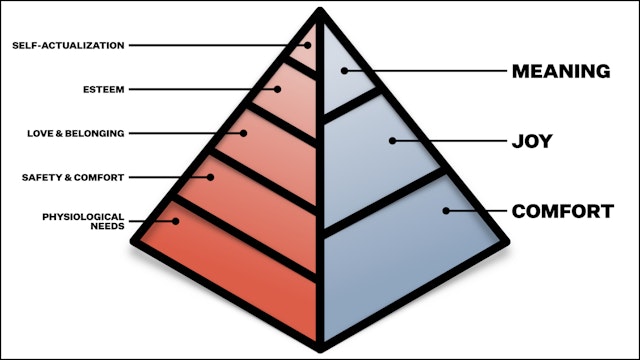The answer to advertising in the age of numbness: joy, comfort and meaning
Brendan Kennedy of Signal Theory responds to those who yearn for the ‘Golden Age’ of marketing in this love letter to the three pillars of creativity: joy, comfort, and meaning.

Advertising isn't what it used to be. But is that such a bad thing? / Nong via Unsplash
I started my career back when agencies had these things called ‘offices’. They were usually medium-sized rooms that had a window in them. They even had doors. Hell, some people still smoked in them. It was a glorious time.
But while I look back on my start with fondness, I’ve recently noticed this trend online where advertisers yearn for the industry’s Golden Age. An example goes like this: a person posts an image of a vintage ad with a caption along the lines of “Oh great advertising, how I miss you”.
As someone with a playlist dedicated to hair metal bands, I’m no stranger to the pull of nostalgia. But while the examples of advertising’s heyday are great, you’d be silly to think that today’s work isn’t every bit as great. In fact, there’s more.
When Bill Bernbach wrote Think Small, you didn’t have to watch three pre-roll ads to see it. We’ve reached a saturation point – and not just to advertising. Safe to say that when we’ve all grown numb to news of violence, climate disasters and the next strain of Super Covid, it’s gonna be tough for your 30-second spot about ketchup to connect with people.
The burning question: how do you get people to care?
At my shop (Signal Theory, based in Kansas City), our approach to that question is based on the science of human behavior. I won’t bore you with the academia of it all, that’s for our strategists (boom, roasted). But much of it comes down to pulling certain emotional levers.
Of course, leveraging emotion isn’t exactly new. Most agencies have a part in their brief that asks, “What do we want the audience to feel?” The thing is, it’s not about what “we” want. It’s not even the consumer. It’s the human. What do humans need to feel? The answer to that can be found in Maslow’s hierarchy of needs: those which are physiological, safety, belonging, esteem, and self-actualization.
But Maslow’s pyramid only covers half of it. What if we want something that goes beyond the necessities? What if we want fulfillment? Or reward? What if instead of a pyramid, we need a weighted blanket? Well…
*Advertising has entered the chat.*
Advertising is good at justifying our illogical sides and rewarding our impulses. But there’s a deeper level to it that the smart people at Signal Theory have figured out. What it boils down to is this: joy, comfort, and meaning.
Take a closer squint at that pyramid and you’ll see them. Not as human needs, but the resulting wants. Lemme do my best art director impression and show you a graphic.

In connecting our human needs to our wants, you get the sort of advertising that resonates with people beyond the surface-level stuff. It’s more cellular. A reflection of the things we’re hardwired to crave and attaching stories, experiences and entertainment to those very wants.
It goes deeper
An example of this is our recent work for Sonic’s ‘Wag Shop’. There’s a joy that comes from that first sip of a cherry limeade. But when you connect that feeling to pet owners and their desire to have shared experiences with their furry friends, well, you get the trifecta of human wants all in one campaign.
With John Deere, we amplified what it means to be a farmer, helping to shine a light on women working in agriculture while encouraging the next generation. I also love what our team did for Trapp Fragrances. As a Suburban Dad, ‘freshly cut lawn’ really connected to my sense of comfort (now, if only they made a mulch version).
And, so people don’t accuse me of being a corporate shill (it’s me, I’m people), we’re not the only ones doing this sorta thing. RGA did it with this, and David Madrid with this. These are all wildly different campaigns. But that’s kind of the genius of joy, comfort and meaning. They capture the foundation of our human wants, but they don’t limit us creatively.
Perfection is outdated
Back when I was in school, they told us to never put your own voice into the brand. While that advice still carries some merit – it’d be weird if, say, the American Red Cross started roasting people on Twitter – it’s also outdated. Because to me, human experiences are the wellspring for great creative. After all, no one cares about ‘Reasons to Believe’ if they have no reasons to care.
Those experiences are often messy. Imperfect. Beautiful one minute, tragic the next. But damn do they make us feel something. Which is why they serve as the basis for the best stories. Even brand stories. So I guess in some way, the people online are right. Advertising sure isn’t what it used to be.
Personally, I couldn’t be more excited.
Content by The Drum Network member:

Signal Theory
Signal Theory is a brand development, marketing and design firm with offices in Kansas City and Wichita. Our job is to help people and brands connect in ways that...
Find out more
